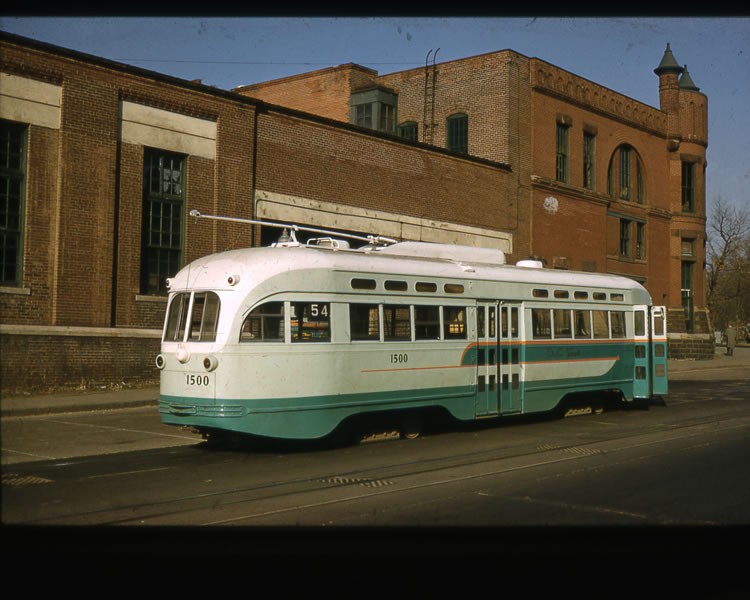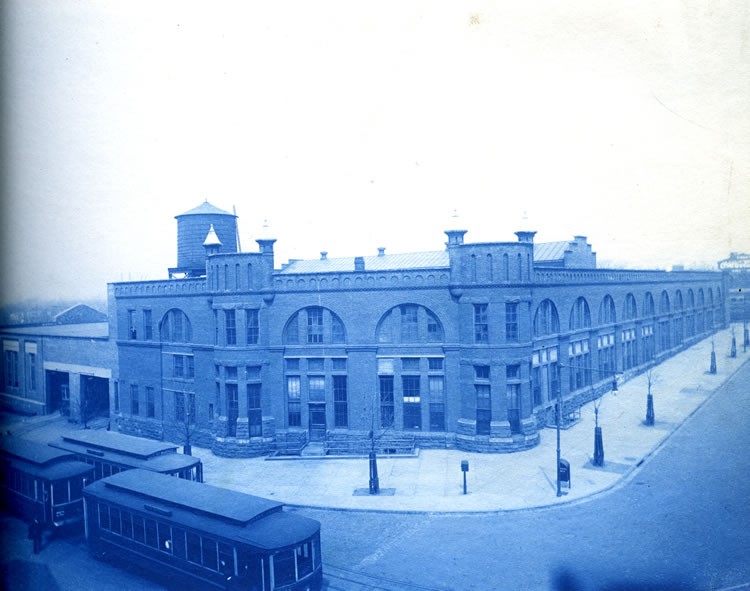Navy Yard Streetcar Barn
Introduction
Text-to-speech Audio
Images
.jpg)
A streetcar running on M Street near the Car Barn in the 1960s, before the car barn was painted.

From M Street and 7th Street SE

Backstory and Context
Text-to-speech Audio
The Washington and Georgetown Railroad Company was established in 1862 and ran 3 horse-drawn streetcar lines: North-south on 7th street, North-south on 14th street, and East-west on Pennslyvania Avenue from Georgetown to the Navy Yard. On the Pennslyvania Avenue line, the stables and car barn were located on the Georgetown end at the Georgetown Car Barn.
But, when horses were retired on use from the Washington and Georgetown, and power functions switched to using cable pulled streetcars, the W&G built multiple buildings to facilitate successful cable operations. These were the 7th car barn and powerhouse, the 14th car barn, the Pennslyvania Avenue powerhouse, and the Navy Yard car barn. All the buildings were completed in 1891 and designed by Walter C. Root in the style of Romanesque Revival. Of the four buildings, the Navy Yard car barn is the only remaining. The Navy Yards' original construction was 100 by 283 feet and could hold 250 cable cars. The cable car did not remain long, as it was plagued by problems, being prone to breakdowns. A massive fire of the powerhouse on Pennslyvania brought to end cable operations and afterward, the W&G shifted to electrical conduit operations.
In 1895, the W&G merged with another streetcar company becoming Capital Traction Company, one of two in a Washington duopoly on streetcar transit (the other company being the Washington Railway and Electric Company). The Capital Traction company added the one-story addition filling in the rest of the block in 1909. When streetcars were phased out of DC in the late 1950s and 1960s, the Navy Yard was one of the last car barns to remain open, receiving the last streetcar on January 28, 1962.
Sources
Memorandum, "National Register of Historic Places Registration Form," n.d., accessed January 2, 2021,
https://dl.dropboxusercontent.com/s/brib5ejexe8tesp/Navy%20Yard%20Car%20Barn%20NR%20nom.pdf?dl=0
Historical Society of DC
Historical Society of DC
